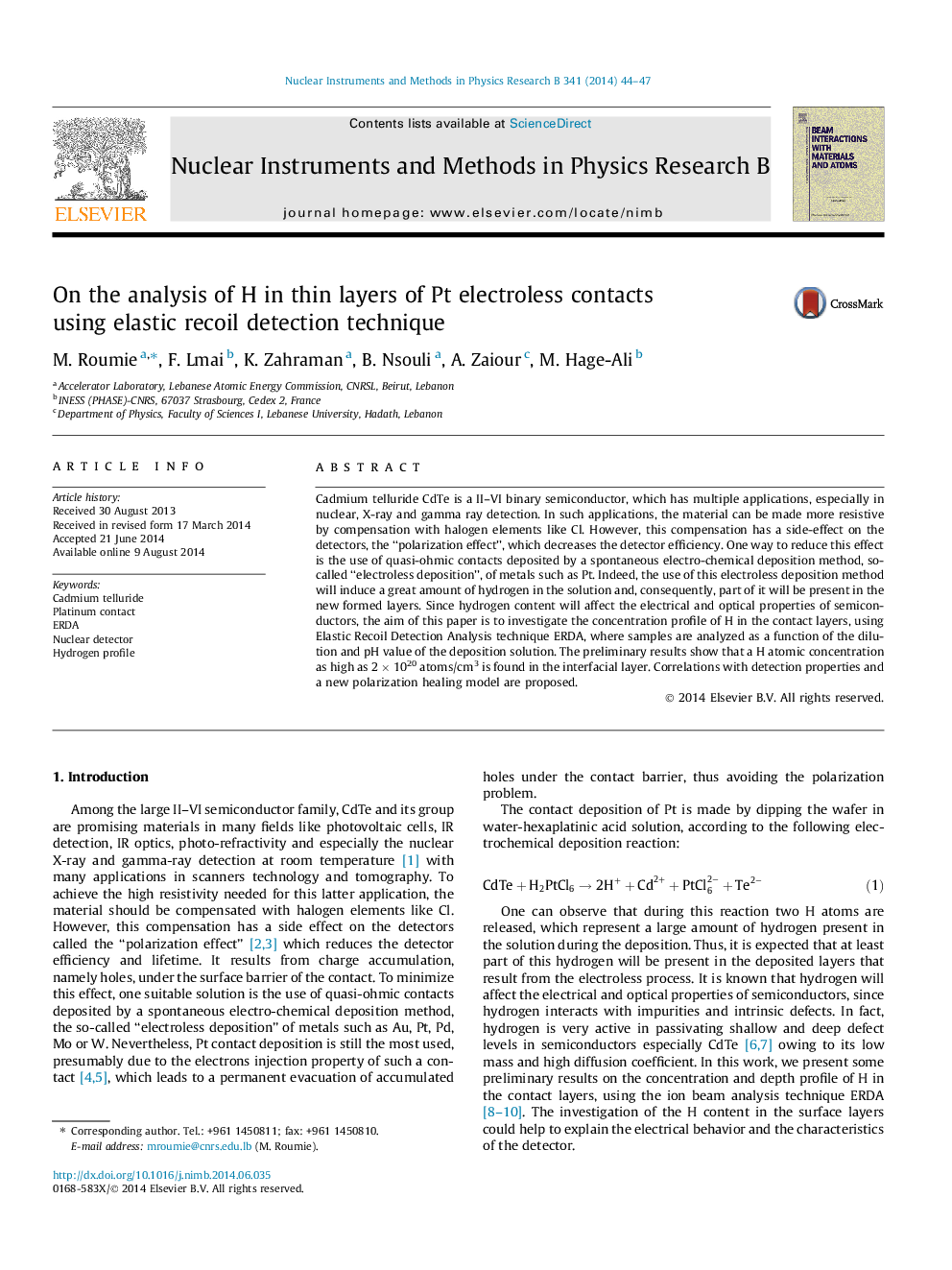| Article ID | Journal | Published Year | Pages | File Type |
|---|---|---|---|---|
| 1682909 | Nuclear Instruments and Methods in Physics Research Section B: Beam Interactions with Materials and Atoms | 2014 | 4 Pages |
Abstract
Cadmium telluride CdTe is a II-VI binary semiconductor, which has multiple applications, especially in nuclear, X-ray and gamma ray detection. In such applications, the material can be made more resistive by compensation with halogen elements like Cl. However, this compensation has a side-effect on the detectors, the “polarization effect”, which decreases the detector efficiency. One way to reduce this effect is the use of quasi-ohmic contacts deposited by a spontaneous electro-chemical deposition method, so-called “electroless deposition”, of metals such as Pt. Indeed, the use of this electroless deposition method will induce a great amount of hydrogen in the solution and, consequently, part of it will be present in the new formed layers. Since hydrogen content will affect the electrical and optical properties of semiconductors, the aim of this paper is to investigate the concentration profile of H in the contact layers, using Elastic Recoil Detection Analysis technique ERDA, where samples are analyzed as a function of the dilution and pH value of the deposition solution. The preliminary results show that a H atomic concentration as high as 2Â ÃÂ 1020Â atoms/cm3 is found in the interfacial layer. Correlations with detection properties and a new polarization healing model are proposed.
Related Topics
Physical Sciences and Engineering
Materials Science
Surfaces, Coatings and Films
Authors
M. Roumie, F. Lmai, K. Zahraman, B. Nsouli, A. Zaiour, M. Hage-Ali,
